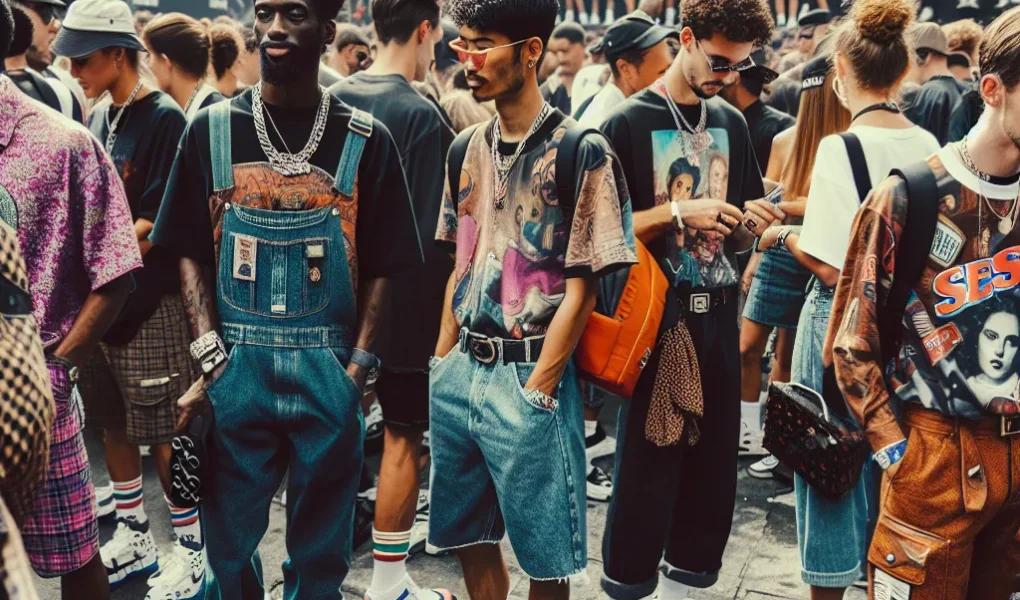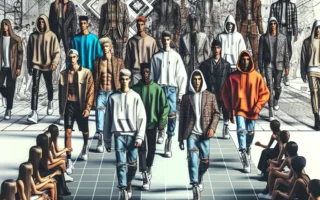The Origins of Streetwear Fashion: A Historical Perspective
When delving into the evolution of streetwear fashion, it is imperative to explore its origins through a historical lens. The roots of streetwear can be traced back to the 1970s and 1980s, emerging from the cultural landscape of inner-city urban communities, particularly in New York City and Los Angeles. Influenced by the hip-hop and skateboarding subcultures, streetwear initially manifested as a form of self-expression and rebellion against the mainstream fashion industry. This grassroots movement gave rise to iconic brands such as Stussy, Supreme, and A Bathing Ape, which played pivotal roles in shaping the aesthetic and ethos of streetwear.
Streetwear Icons: Influential Figures in the Evolution of Fashion
Exploring the Evolution of Streetwear Fashion unveils a rich tapestry of influential figures who have left an indelible mark on the trajectory of this cultural phenomenon. Streetwear icons have played a pivotal role in shaping the evolution of fashion, transcending traditional sartorial boundaries and redefining the concept of style. From the pioneering efforts of Shawn Stussy, whose eponymous brand Stüssy laid the groundwork for modern streetwear, to the visionary impact of Virgil Abloh, who has seamlessly bridged the worlds of streetwear and high fashion through Off-White and Louis Vuitton, these influential figures have championed the democratization of fashion and propelled streetwear to the global stage.
The Impact of Technology on Streetwear: From Subculture to Mainstream
Streetwear fashion has undergone a remarkable evolution, transitioning from being a subculture movement to a mainstream fashion phenomenon. A key driving force behind this transformation has been the impact of technology on streetwear. The rise of social media and e-commerce platforms has played a significant role in propelling streetwear from its underground roots into popular culture.
Technology has enabled streetwear brands to reach a global audience with unprecedented ease. Social media channels such as Instagram, Twitter, and Facebook have provided a platform for streetwear enthusiasts to connect, share, and promote their style, effectively amplifying the visibility of the streetwear movement. Moreover, the advent of e-commerce has facilitated the direct-to-consumer model, allowing streetwear brands to bypass traditional retail channels and sell directly to their fan base, thereby fostering a stronger connection between the brands and their consumers.
The influence of technology is also evident in the way streetwear is designed and produced. Advancements in digital design tools and manufacturing techniques have empowered designers to create and iterate on their designs more efficiently. This has led to a proliferation of diverse and innovative streetwear styles, catering to an increasingly broad and eclectic consumer base.
Furthermore, collaborations between streetwear labels and technology companies have blurred the lines between fashion, innovation, and functionality. Examples include the integration of wearable technology and smart textiles into streetwear garments, reflecting a convergence of fashion and tech that resonates with the contemporary consumer.
In essence, the impact of technology on streetwear has been profound, propelling it from the fringes of fashion to the forefront of global trends. As technology continues to advance, it is likely that streetwear will continue to evolve, offering new and exciting possibilities for creative expression and cultural significance.
Sustainable Practices in Streetwear: Shaping the Future of Fashion
In recent years, the streetwear fashion industry has experienced a significant shift towards sustainable practices, marking a pivotal moment in the evolution of the urban fashion landscape. The ethos of streetwear has always been rooted in individuality, self-expression, and urban culture, but now, there is a growing emphasis on environmental responsibility and ethical production processes. This shift is reshaping the future of fashion by introducing eco-conscious initiatives and innovative approaches to design and manufacturing.
As sustainability becomes an increasingly influential factor in consumers’ purchasing decisions, streetwear brands are integrating eco-friendly materials, such as organic cotton, recycled fabrics, and biodegradable textiles, into their collections. Additionally, there is a greater focus on reducing waste and minimizing the carbon footprint throughout the supply chain. From sourcing raw materials to the final packaging, conscious efforts are being made to prioritize sustainability at every stage of production.
Moreover, the concept of sustainability in streetwear extends beyond the materials used; it encompasses fair labor practices, social responsibility, and a commitment to transparency. Many streetwear brands are forging partnerships with ethical manufacturers and advocating for improved working conditions within the industry. By championing these sustainable practices, streetwear is not only influencing the future of fashion but also setting a new standard for responsible and ethical business conduct.
In essence, the evolution of streetwear fashion towards sustainability is driven by a collective desire to minimize the environmental impact of clothing production and embrace a more socially conscious approach to design and consumption. By weaving sustainability into the fabric of streetwear, the industry is not only shaping the future of fashion but also demonstrating its potential to lead the way towards a more sustainable and ethical global fashion ecosystem.
Streetwear Fashion and Social Media: Changing the Landscape of Style
In recent years, streetwear fashion has undergone a remarkable evolution, with social media platforms playing a pivotal role in shaping and spreading this cultural phenomenon. The convergence of streetwear fashion and social media has resulted in a transformative impact on the way style is perceived, shared, and consumed. Platforms such as Instagram, Twitter, and TikTok have propelled streetwear from its underground roots to the mainstream, creating a virtual landscape where fashion enthusiasts, influencers, and brands converge to showcase and explore the latest trends and styles.
Social media has provided a platform for streetwear enthusiasts to connect, share inspiration, and discover new brands and designers, effectively democratizing fashion and allowing individuals to express their unique style. The immediacy and global reach of social media have accelerated the pace of trend cycles and fostered a more inclusive and diverse fashion environment. Moreover, streetwear brands have leveraged social media as a powerful marketing tool, engaging directly with consumers, building communities, and creating authentic, relatable narratives that resonate with their audience.
Furthermore, the symbiotic relationship between streetwear fashion and social media has cultivated a new breed of style icons and influencers who have redefined the traditional fashion landscape. These individuals curate their personal aesthetic, utilizing social platforms to cultivate a loyal following and influence the fashion preferences of their audience. As a result, streetwear has become intertwined with the digital realm, with social media dictating not only what is fashionable but also how fashion is consumed and communicated.
In conclusion, the intersection of streetwear fashion and social media has indelibly altered the way we perceive and engage with style. As social media continues to evolve, so too will its impact on the ever-changing landscape of streetwear fashion, shaping trends, fostering creativity, and redefining the boundaries of fashion expression.



